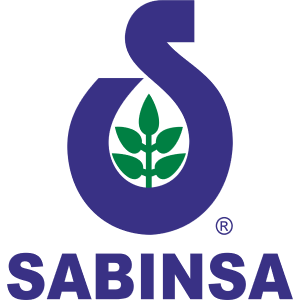Evidence gathering methods: Curcuminoids from Curcuma longa in the fight against cancer and age related disorders
Acute versus chronic inflammation
Prevalent thinking toward inflammation, and the subsequent efforts to immediately quell it, is associated with a first aid type approach where pain is manifest by the dysfunctioning of the affected part of the body. However it is inflammation as a lingering, rather than an acute, process that is increasingly attracting our attention as the root-cause of many disease conditions which are still poorly understood and treated. Cardiovascular disease, a leading cause of mortality in the world, is no longer considered a disorder of lipid accumulation, but rather a disease process characterized by low-grade inflammation of the vascular lining (endothelial cells) and an inappropriate 'wound healing response' of the blood vessels. Cancer is another example of a chronic degenerative disease which is initiated and promoted by the lingering inflammation often triggered by an environmental or nutritional factor, i.e. carcinogen. In a similar way Alzheimer's Disease (AD), a devastating neurodegenerative disease, is hypothesized as being a dysfunction of the immune system reacting to enduring inflammation of the central nervous system.
Epidemiological and laboratory studies have demonstrated the increased risk of the above cited diseases in individuals with elevated serum levels of cytokines such as nuclear factor kappa beta (NF-kB), interleukin-6 (IL-6) and tumor necrosis factor-alpha (TNF-alpha), cell adhesion molecules such as intercellular adhesion molecule-1 and P-selectin, and acute-phase proteins such as C-reactive protein, fibrinogen and serum amyloid and the over-expression of cyclooxygenase enzymes (COX-1 and COX-2). The above mentioned indices signify a chronic inflammatory process that may predispose one to a multitude of degenerative disorders, diseases and cancer.
Although synthetic drugs can effectively reduce inflammation and pain in acute and chronic inflammatory conditions, they work in a very selective way which may be counterproductive to the purpose of treatment. Recent research reveals that selective COX-2 inhibitors (pharmaceutical) may induce metabolic imbalances that can result in the overproduction of two toxic cytokines; TNF-alpha and certain interleukins that are involved in the progression of inflammation.
Although synthetic drugs can effectively reduce inflammation and pain in acute and chronic inflammatory conditions, they work in a very selective way which may be counterproductive to the purpose of treatment. Recent research reveals that selective COX-2 inhibitors (pharmaceutical) may induce metabolic imbalances that can result in the overproduction of two toxic cytokines; TNF-alpha and certain interleukins that are involved in the progression of inflammation.
In the emerging trend to search for natural alternatives, turmeric root, ginger root, rosemary leaves, green tea leaves and their active phytochemical constituents are reported to be effective COX-2 inhibitors that also inhibit the formation of inflammatory leukotrienes and toxic cytokines. In addition, they do not irritate the gastrointestinal lining (mucosa). These materials have a safe record of medicinal and food use spanning centuries. Furthermore, no adverse effects have been reported in clinical studies performed to validate various therapeutic properties of these herbs. In fact, many of these compounds are included on the so-called GRAS list (generally recognized as safe) – which means that they are safe to use in daily nutrition.
However, if the question were to be asked: what is the most promising food derived compound(s) to fight inflammation and related diseases? -the answer, based on the current body of scientific evidence, would have to be turmeric's curcuminoids.
Curcumin (chemically diferuloylmethane), and its derivatives demethoxycurcumin and bisdemethoxycurcumin, collectively known as curcuminoids, are responsible for the yellow pigment derived from the roots of the perennial herb turmeric (Curcuma longa L.).
The same ground, dried roots of turmeric, which have been used for centuries as a spice (curry), food preservative and a coloring agent, have been found to be a rich source of phenolic compounds (curcuminoids) with versatile biological mechanisms. In dietary supplement practice and in a growing body of scientific research, an extract of turmeric roots is being utilized that is standardized for a high purity of curcuminoids, e.g. 95% curcuminoids.
Curcuminoids in prevention and treatment of cancer
In the last three years alone there have been several pioneering IND (Investigational New Drug) studies granted by the FDA and other NIH funded studies for the investigation of curcumin and its derivatives in the treatment of patients with cancer and Alzheimer's Disease. Some of the leading clinical research centers in the US, including MD Anderson Hospital in Houston, TX, are involved in pre-clinical and clinical research of the anti-cancer mechanism and application of curcuminoids in conditions including multiple myeloma, colon cancer, pancreatic, breast, prostate, head and neck and respiratory tract cancers. These cancer conditions are either currently being studied in clinical experiments or considered next in line for systematic evaluation with curcuminoids therapy.
Curcuminoids inhibit several processes that contribute to the survival, proliferation, invasion and metastasis of tumor cells. These processes with which curcuminoids interfere include signaling mechanisms (critical for tumor growth), regulation of apoptosis (cell death), and tumor angiogenesis (new blood vessel formation which feeds tumors). Current research is designed to determine which of these fundamental processes in cancer development account for the clinical effects of curcumin and its derivatives.
Curcuminoids have significant immunomodulating and antiinflammatory effects, in part due to the inhibition of cyclooxygenase type 2 enzyme (COX-2) and its subsequent arachidonic acid metabolism. Like several other immunomodulators, curcuminoids inhibit the activation of the nuclear factor kappa-B (NF-kB) family of transcription factors, which are known to be activated in a wide variety of solid tumors and leukemias. The activation of NF-kB may shield tumor cells from apoptosis, or programmed cell death, promote tumor growth factors and those factors that facilitate invasion and metastasis of tumors. Curcuminoids block the NF-kB mediated gene expression responsible for the chain of events leading to tumor development, progression and expansion. A probable mechanism of curcuminoids seems to be blocking the degradation of the inhibitors of NF-kB. In vitro,
curcuminoids induce apoptosis, and thus inhibit tumor growth in a broad range of tumor cells, including cell lines from colon, breast, prostate, squamous cell, renal cell, hepatocellular carcinomas, B and T-cell lymphomas, leukemias, melanoma and sarcoma cells.
Curcuminoids also affect a signaling mechanism that involves expression and activation of certain receptors of growth factors that promote tumor growth. For example, HER-2/neu is a member of the Epidermal Growth Factor Receptor family, which is overexpressed in approximately 30% of breast cancer patients. HER-2/neu breast cancer cells, when exposed to curcumin, inhibited the expression of the HER-2 receptor.
Curcuminoids also affect a signaling mechanism that involves expression and activation of certain receptors of growth factors that promote tumor growth. For example, HER-2/neu is a member of the Epidermal Growth Factor Receptor family, which is overexpressed in approximately 30% of breast cancer patients. HER-2/neu breast cancer cells, when exposed to curcumin, inhibited the expression of the HER-2 receptor.
This ability makes curcumin a promising agent for combination with paclitaxel (Taxol). Taxol is an alkaloid derived from the Pacific yew tree, and is used as first line chemotherapy in breast cancer. It induces the apoptosis (programmed cell death) of various breast tumor cell lines, but overexpression of HER-2/neu may block these apoptotic effects and induce resistance to Taxol. Further, HER-2/neu and Taxol can activate anti-apoptotic pathways through activation of NF-kB. Thus, agents such as curcuminoids that can down-regulate NF-kB activation and decrease HER-2/neu overexpression and other markers of tumorigenesis augment the therapeutic effects of Taxol against breast cancer.
Interestingly, curcuminoids may have a comparable mechanism of action to the drug therapy involving Herceptin for breast cancer patients with HER-2 receptor positive cancer cells. Herceptin is an antibody against HER-2 receptors; binding, blocking and inactivating those receptors. In addition, in vitro, the growth of breast cancer cells with multi-drug resistance (MDR) characteristics is inhibited by these turmeric phenolics; the stimulation of estrogen receptor (ER) positive cell lines by estrogenic pesticides is also inhibited by curcuminoids. Curcuminoids have also been found to inhibit epidermal growth factor receptor expression and/or activation in skin cancer cell lines as well as in androgen sensitive and androgen insensitive prostate cancer cell lines.
An important anti-cancer mechanism of curcuminoids is due to constriction of vital blood supply to the rapidly growing tumor. These compounds inhibit in vitro the vessel endothelial and smooth muscle cell growth and proliferation, which is the basis for inhibition of angiogenesis (new blood vessel formation). Curcuminoids also inhibit new vessel formation induced by growth factors, such as fibroblast growth factor-2 (FGF-2). Furthermore, curcuminoids inhibit the production of vascular endothelial growth factor (VEGF) in human melanoma cells. The antiangiogenic effect of turmeric compounds can be explained due to the aforementioned selective COX-2 inhibition with curcuminoids. COX-2 enzyme activity may actually contribute to tumor growth (inhibition of apoptosis) along with increased production of the new vessel growth factors (VEGF, FGF) and the formation of new blood vessels. An in vivo study showed tumor regression in response to cyclooxygenase inhibitors in experimental models of human colon, prostate, gastric, lung and certain types of head and neck tumors. In in vitro experiments cyclooxygenase inhibitors inhibited the growth of human pancreatic, liver and breast cancer cell lines.
While there are still limited human trials involving curcuminoids, in animal models curcuminoids prevent tumor formation in genetically predisposed animals, i.e. animals prone to develop precancerous multiple intestinal adenomas, a model for the human condition known as Familial Adenomatous Polyposis (FAP). Dietary enrichment with curcuminoids inhibited polyp growth in these animals by over 60%. A study with human subjects is currently underway evaluating the effects of curcuminoids on Aberrant Crypt Foci (ACF) development in the colon. Curcuminoids were also successfully tested in several other intervention trials. In one experiment mice inoculated with melanoma cells responded to dietary curcumin intervention with a reduction in the number of lung tumor nodules by 90%, as compared to sham fed controls. In a dose-escalation study 15 patients with advanced colorectal cancer refractory to standard chemotherapy received curcuminoids in doses between 0.45 and 3.6 g daily for up to 4 months. Three biomarkers of the potential activity of curcuminoids were translated from preclinical models and measured in patient blood leukocytes: glutathione S-transferase activity (GST), levels of DNA adduct (M1G), and prostaglandin E2 (PGE2) production induced ex vivo. Dose-limiting toxicity was not observed. A daily dose of 3.6 g curcuminoids resulted in a significant decrease in PGE2 production in the blood samples, while showing no effect on GST and M1G formation. In conclusion of this study, a daily oral dose of 3.6 g of curcuminoids is advocated for Phase II evaluation in the prevention or treatment of cancer. PGE2 production in blood and target tissue may indicate biological activity. It should be noted that other studies indicate the anti-cancer mechanism of curcuminoids as related to induction of GST enzymes, inhibition of PGE2 production, or suppression of oxidative genetic material damage (DNA adduct (M1G) formation).
Curcuminoids in prevention and treatment of neurodegenerative conditions
Aging can be described as a decline in function and performance of body organs and systems, which enhances the likelihood of wear-and-tear damage, inflammation and pain of affected organs or systems in the body. One of the most challenging fields in anti-aging medicine is the management and treatment of chronic degenerative conditions as exemplified by Alzheimer's Disease. This disease is increasingly seen as a defective response to the aging immune system.
The aging immune system becomes progressively less efficient in dealing with inflammation. This is because both innate and adaptive (acquired during life-time) immune responses show age-related changes that could be decisive for healthy aging and survival. Natural or innate immunity is particularly important in the aging process and is based on foot soldier-type cells called macrophages, which are crucial for defense against microbes and removal of cellular and metabolic debris. Innate immunity is our first line of defense. It functions due to a macrophages' ability to recognize a pattern of a pathogenic (harmful) molecule through a code system called pathogen-associated molecular patterns (PAMPs). These potentially harmful molecules, e.g. amyloid protein, when recognized by macrophages, trigger responses which also guide an appropriate adaptive immune response. The interaction between the innate and adaptive immune systems is critical for the clinical outcome of a pathogen molecule challenge to an organism. A harmonious response to the challenge of a pathogen molecule changes with aging and may lead to a defective or misguided response of macrophages - a difference between macrophages contributing to the body injury or to the healing process.
In Alzheimer’s Disease (AD), there is increasing evidence supporting a role for macrophages and the dependent innate immunity system in disease origins and progression. Brain amyloidosis is hypothesized to be a crucial pathogenic mechanism in the AD brain and many investigators of AD pathogenesis believe that accumulation of amyloid-β (Aβ) is toxic to neurons. The immune system of patients with AD is generally poorly responsive to Aβ. The amyloid hypothesis of AD has increased interest in developing therapies that promote clearance of brain amyloidosis by macrophages leading to a novel strategy of immunotherapy with Aβ vaccine, or antibodies against the amyloid protein. It was established that the anti-Aβ antibodies were sufficient for reducing Aβ in the brain, and that these reductions were accompanied by improvement in cognitive function in animal models of AD. Importantly, since the 1990’s macrophages have been considered as perpetrators of inflammatory damage in neurodegenerative diseases, in parallel with cardiovascular disorders. Consequently, anti-inflammatory therapies with different drugs have been tested with positive, but also negative results.
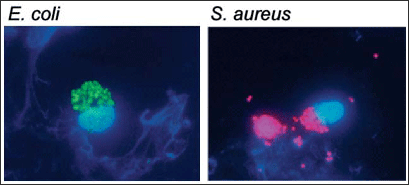
Figure 1 - Phagocytosis of E. coli (green) and S. aureus (red) by AD macrophages is excellent (1)
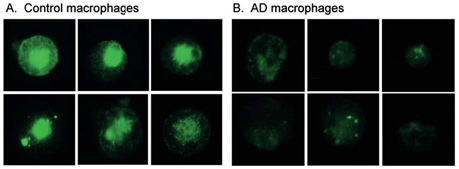
Figure 2 – Phagocytosis of amyloid-β by AD macrophages is defective in comparison to control macrophages (1).
FITC-Aβ (green), DP11 camera on Bmax Olympus
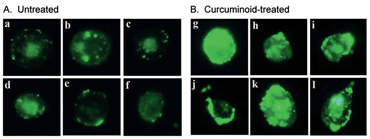
Figure 3 – Phagocytosis of FITC-Aβ by AD macrophages is increased by treatment with curcuminoids (1).
0.1 μM curcuminoids overnight, 6 macrophages each, DP11 camera on Bmax Olympus microscope
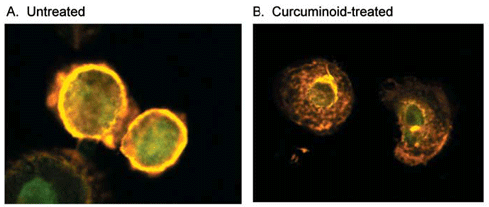
Figure 4 – Phagocytosis of Aβ by AD macrophages is increased by curcuminoid treatment (1).
Confocal microscopy, FITC-Aβ (green), phalloidin-FITC (red), colocalization (yellow)
Note surface binding in A vs. intracellular uptake in B
Recently a group of researchers from UCLA have tested a hypothesis that curcuminoids, which have epidemiologic and experimental rationale for use in AD, may improve the innate immune system and increase amyloid clearance from the brain of patients with sporadic Alzheimer's Disease. Macrophages of a majority of AD patients do not ingest (phagocitize), and do not efficiently clear amyloid from the brain, although they phagocytize bacteria. In contrast, macrophages of normal subjects phagocytize amyloid (Figures 1, 2). Upon amyloid stimulation, macrophages of normal subjects accelerate synthesis of molecules which participate in the previously discussed system of pathogen recognition, specifically MGAT3 (beta-1,4-mannosylglycoprotein 4-N-acetylglucosaminyltransferase) and Toll like receptors (TLRs), whereas mononuclear cells of AD patients generally down-regulate these genes. Defective phagocytosis of the amyloid may be related to suppression of these pathogen recognition molecules. In mononuclear (macrophage-like) cells isolated from peripheral blood in AD patients, curcuminoids, especially bisdemethoxycurcumin, may enhance defective phagocytosis of amyloid (Figures 3, 4) while restoring synthesis critical for phagocytic function molecules, MGAT3 and TLRs. Therefore curcuminoids may provide a novel approach to AD immunotherapy which is safer than the recently suggested vaccine therapy.
Curcuminoids clinical use, safety and pharmacokinetics
Current clinical experience indicates that oral supplementation of curcuminoids is tolerated without toxicity at doses of up to 8 g daily for up to 12 months. Curcuminoids are poorly absorbed from the gastrointestinal tract, with low nanogram levels of circulating curcuminoids detected in the plasma. Nonetheless, biological activity is beyond question, with indices of inflammation like NF-kB and COX-2 suppressed by oral administration of curcuminoids as well as clinical improvement of the treated condition. On the other hand, preclinical data suggests that curcumin can be more effective if higher levels of exposure are achieved. As hydrophobic and lypophilic compounds, curcuminoids cannot be given directly intravenously but can be encapsulated in a liposome for intravenous administration. This method would theoretically achieve higher circulating levels of curcuminoids. Another possibility under consideration involves a nano-emulsion form of curcuminoids to bypass the gastrointestinal barrier to achieve higher plasma concentrations. It is now well established that curcumin exists in rodent and human plasma largely in conjugated forms with the glucuronide conjugate present in much greater abundance than the sulfate conjugate. However, even plasma concentrations of curcumin released from conjugated forms are surprisingly low. Interestingly there is little evidence of the biological activity of curcumin glucuronide, e.g. against malignant cell growth. Possibly there are other forms of conjugated curcuminoids or derivatives of curcuminoids which can better explain their biological activity and provide future formulae for more effective clinical application.
Reference
1) Zhang L, Fiala M, Cashman J, SAYRE J, Espinosa A, Mahanian M, Zaghi J, Badmaev V, Graves MC, Bernard G, Rosenthal M. "Curcuminoids enhance amyloid-β uptake by macrophages of Alzheimer's disease patients" J. Alzheimers Dis. 2006, 10 (1), 1-7



